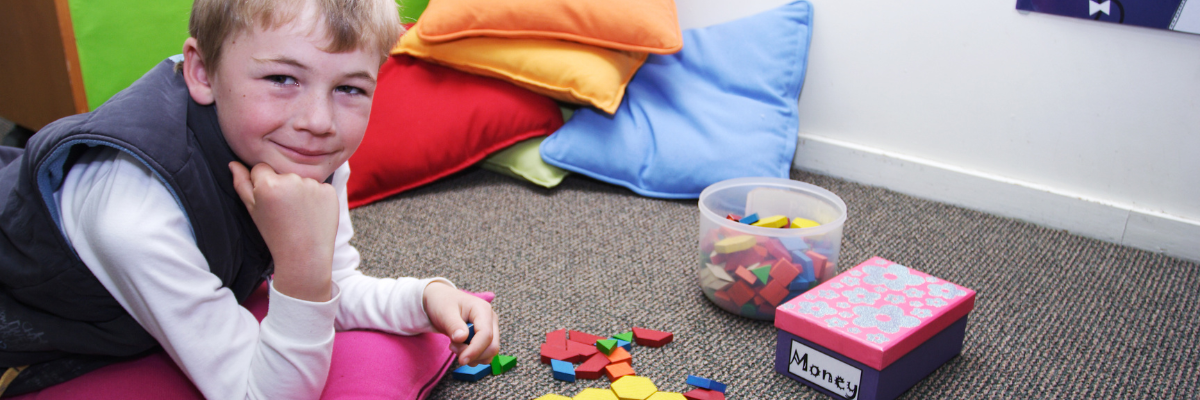
Key takeaways about vicarious trauma:
- Indirect exposure to trauma causes psychological distress that impairs students’ ability to learn.
- When teachers recognize student behavior patterns and changes, they can offer supports to calm escalating emotions in class.
- When more help is needed, educators need to know appropriate intervention steps.
When we think about trauma and its effects on student learning, we often focus on its direct forms, such as physical, sexual, or emotional abuse. However, there’s a more insidious form of trauma that can have a significant impact on both students and teachers: vicarious trauma.
Here’s what educators need to know about recognizing symptoms of vicarious trauma and managing trauma response in the classroom.
What is vicarious trauma, and how can it impede learning?
Vicarious trauma, also known as vicarious traumatization or second hand trauma, happens when an indirect experience creates lingering adverse effects. An indirect experience is something that we see or learn about, but it doesn’t happen to us personally. Here are a few common examples:
- Exposure to violent or disturbing images, sounds, or stories in the media
- Repeated exposure to the details of a traumatic event that happened to another person, such as a friend or family member
- Witnessing an accident or tragedy happen to someone else
Indirect exposure to trauma is common: in a National Survey of Children’s Exposure to Violence, 30% of children reported exposure to community or family trauma in their lifetime. These experiences can lead to adverse effects that interfere with students’ ability to learn:
- Ongoing anxiety and/or depression
- Poor attention span and memory
- Lack of motivation
- Developmental immaturity or regression
- Isolation and impaired social skills
Students (and even adults) experienced vicarious trauma during the pandemic when they were continuously exposed to news about serious illnesses and deaths. In a 2025 systematic review of the effects of the pandemic on children, researchers found that “social isolation, parental conflict, economic hardship, and school disruption were among the factors that led to heightened anxiety, depression, and psychological distress.”
Many children reacted with anxiety and fear of leaving the house (and refusal to go to school) because they were so afraid of something happening to their parents.
Recognizing vicarious traumatization symptoms
Helping students begins with recognizing the signs that they’re struggling:
- Difficulty controlling emotions (emotional regulation)
- Shutting down
- Poor frustration tolerance
- Inattentiveness
- Attention-seeking behavior
- Talking back
- Physical aggression
It’s also important to know that girls and boys can show different symptoms of vicarious trauma. A longitudinal study of psychological repercussions from the pandemic found that “While girls are more prone to developing affective symptoms, boys tend to exhibit higher levels of oppositional-defiant behavior."
Because vicarious trauma causes such a variety of symptoms, it can be challenging for teachers to identify exactly what’s going on. But by looking for ongoing patterns and noticing sudden changes in behavior, we can identify students who may need extra help and can benefit from tactics designed to reduce psychological distress in class.
Managing trauma response in the classroom
To effectively manage student trauma and behavior, first we need to take the time to get to know our students. When we are familiar with their “baseline” and what tends to trigger them, we can recognize when a student’s emotions begin to escalate in class. Then we can offer them a variety of ways to take a break and regain control of their feelings. And we can tailor the intervention to address the student’s specific needs and mental health issues.
- Disconnect. Allowing the student to spend a few minutes in a “cozy corner” can do wonders to de-escalate emotions. Alternate seating like a bean bag chair can help them relax and be ready to return to the lesson.
- Move. Rather than sitting quietly away from the rest of the class, some students benefit from the opportunity to move and exert excess energy. Allow breaks to stand up and move around the classroom.
- Breathe. Teach breathing techniques (such as box breathing) and mindfulness to help students calm down and regain control.
- Use their hands. Other students need to do something with their hands, such as playing with a fidget toy or squeeze ball.
- Create. Drawing, writing, or other forms of creative expression can help students show their feelings in constructive ways, and also help you better understand what they are experiencing.
Thrive’s Trauma & Behavior PD Bundle helps educators understand the essentials of trauma-informed learning and effective classroom behavior management. The series includes two asynchronous presentations that school staff can watch together or independently:
- Creating a Trauma-Informed Learning Environment
- Understanding and Responding to Behavioral Issues
Each presentation includes a video, a discussion guide to reinforce learning, and additional resources to share with faculty, students, and parents.
What to do when a student needs more help
While our efforts in the classroom can help students in the short term, some students may need more help than we can provide. Here are some steps you can take when you are concerned about a struggling student:
- Talk to parents to learn what they are seeing at home.
- Talk to guidance counselors to report what you’re seeing.
- Refer the student to the child study team or for mental health counseling if available.
Don’t neglect self-care
Vicarious trauma can also affect teachers who are repeatedly exposed to trauma in their schools and communities. That can lead to compassion fatigue, irritability, withdrawal, and feelings of hopelessness.
Remember that you can’t help students if you are experiencing your own trauma response. Self-care is essential for educators: take care of yourself and get help if you need it.




